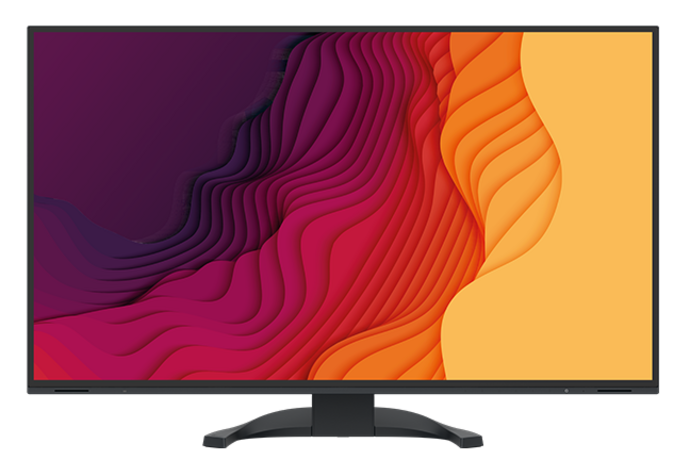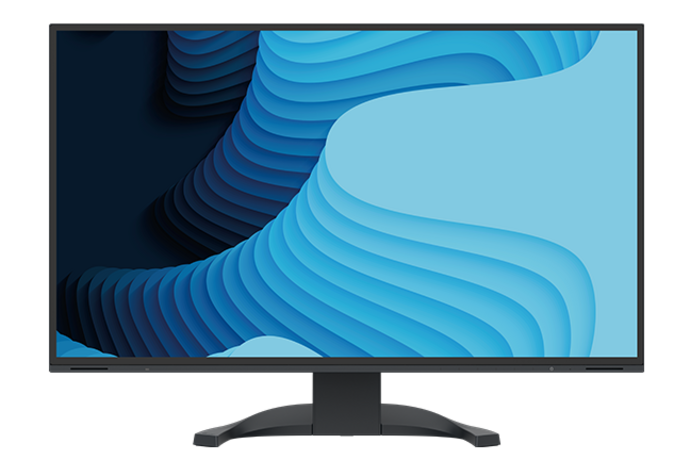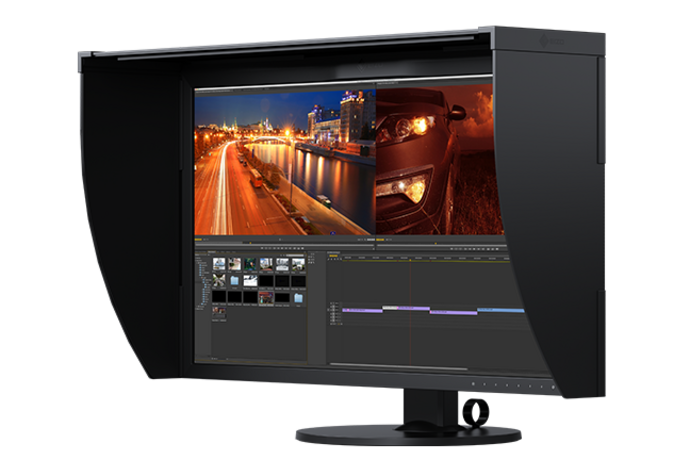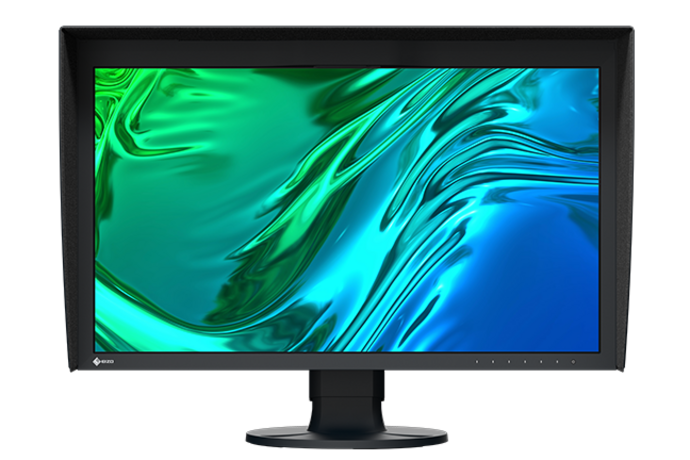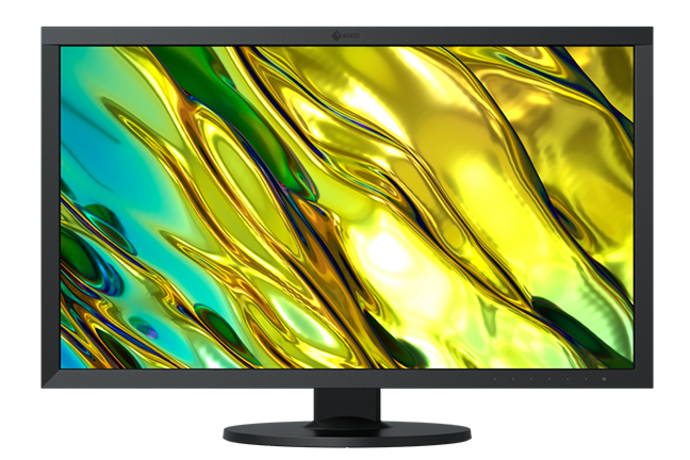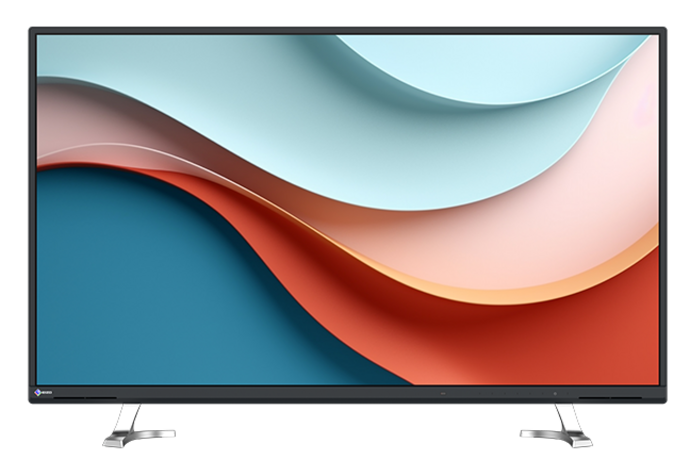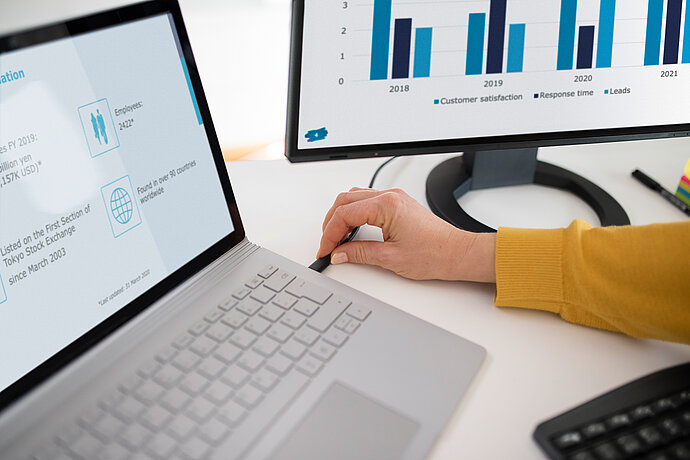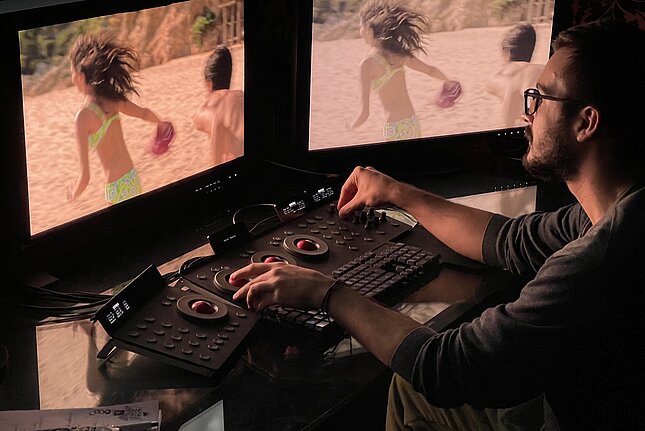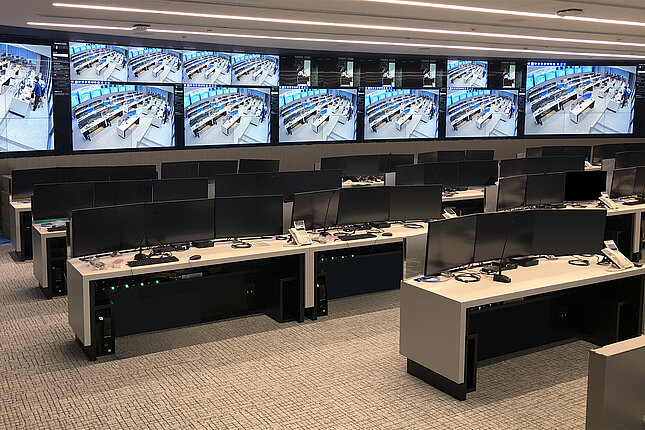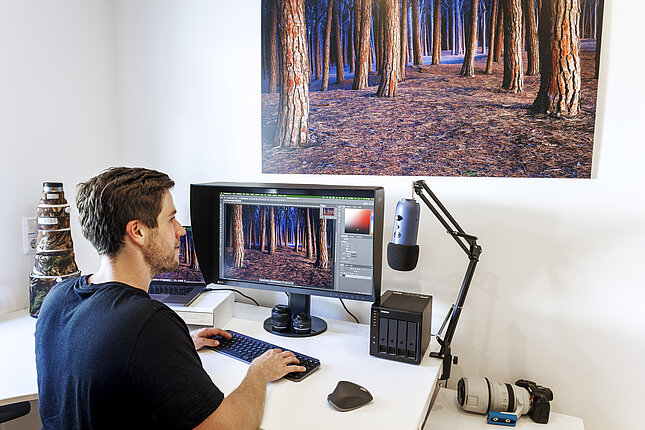The display quality of monitors has undergone an impressive development in recent years. For some areas of application, 4K resolution has long since become the standard. Screen sizes and screen diagonals are also increasing. And the combination of resolution and screen diagonal results in the pixel density - a term that is often used in connection with monitors. In this article, EIZO explains what pixel density is all about and why it is so important.
How the monitor displays sharp images
4K resolution and pixel density
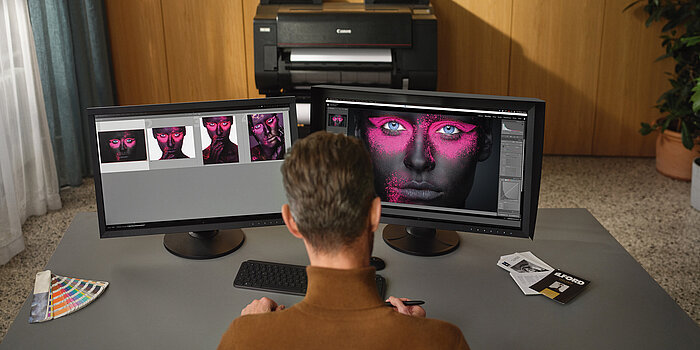
Modern monitors can display impressively high resolutions on impressively large screen diagonals. But is more really always better in this case? The pixel density provides information on this.
This value is usually specified in the units "pixel per inch" or "dots per inch" (pixels per inch) - in short: ppi or dpi. The pixel density therefore describes the number of pixels per inch of the image surface.
Pixel density and display quality
The greater the pixel density, the "finer" the displayed image appears. Put simply, with a high pixel density, you have to get very close to the display to be able to see the individual pixels at all. With a low pixel density, on the other hand, the display appears grainy and blurred.
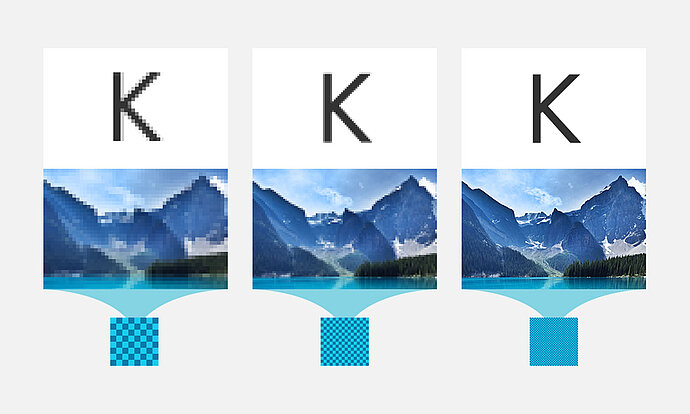
Imagine you are painting a picture with a brush. The finer the bristles of the brush, the more detail you can bring to the canvas. The pixel density is like the fineness of the brush: the more pixels per inch your monitor offers, the sharper and clearer the image is.
This is precisely why the interplay between screen diagonal and resolution is so important for the final display quality. A simple example calculation shows this: the pixel density at a WQHD resolution (2560 x 1440) on a 32-inch display is 91.79 ppi, which is identical to the pixel density at a Full HD resolution (1920 x 1080) on a 24-inch display.
More is not automatically better. A good and clear display quality depends on several factors - and is ultimately also subjective, as everyone perceives pixel grids differently.
What is pixel pitch or pixel pitch?
The term pixel pitch is occasionally used for monitors. This term refers to the distance between adjacent pixels - measured from pixel center to pixel center. In this case, less is more, as a smaller pixel pitch ensures a clearer image. However, this fact can also be traced back to the pixel density, as this increases with a smaller distance between the pixels.
Good to know: 4K is not just 4K
The term "4K" refers to the horizontal resolution of around 4000 pixels. The "K" stands for "kilo" (thousand). Currently, most 4K screens offer a resolution of 3840 x 2160 pixels (4K UHD). They therefore provide four times the amount of pixels compared to full HD screens (1920 x 1080 pixels) - often called 4K UHD screen. However, there are also models with 4096 x 2160 pixels (DCI 4K) for the film industry, which are also referred to as 4K screens - in this case DCI 4K screen.
Pixel density and display resolution in practice
For a long time, computer displays were developed under the assumption that both the operating system and applications use a fixed text size/dpi (96 dpi in the case of Windows). Therefore, the available workspace automatically grew with increasing resolution.
However, the text size/dpi of modern applications is scalable. Displays with 4K resolution benefit from this in particular.
Let's assume, for example, that we set a 27-inch 4K UHD display so that the workspace is displayed as on a 27-inch Full HD display. The result would be an image scaled by 200 percent, as 4K UHD (3840 x 2160 pixels) has twice the vertical and horizontal resolution of Full HD (1920 x 1080 pixels). One pixel from the screen view of the operating system would therefore be displayed on four pixels. In combination with the scaling function of the operating system, this would result in a very sharp and precise image.
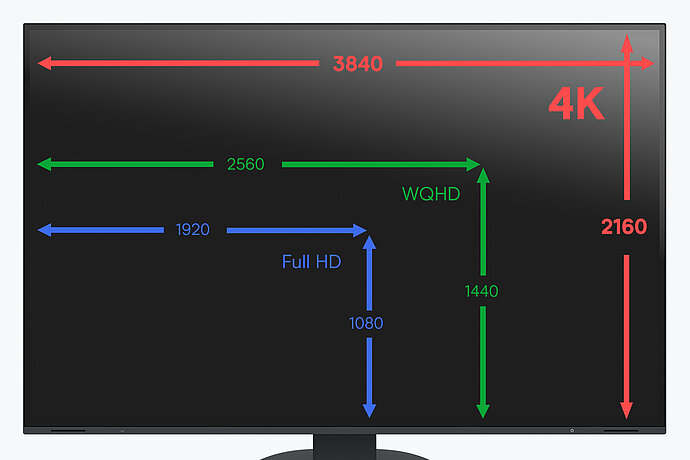
Comparison of display resolution between Full HD, WQHD and 4K
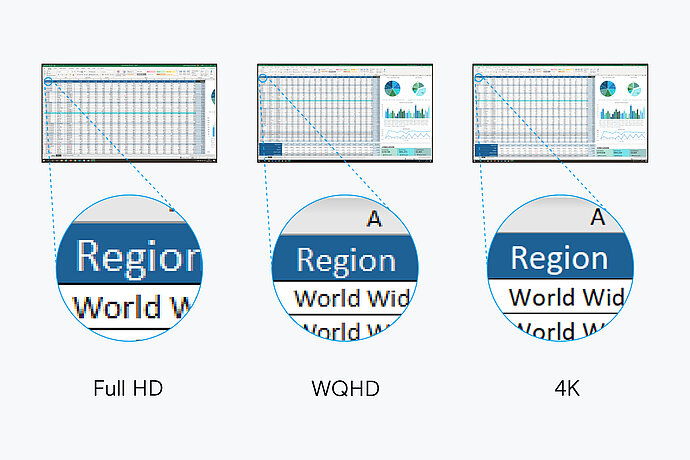
Comparison of pixel density between Full HD, WQHD and 4K
This is the difference in the display of Full HD and UHD 4K with the same screen size. The photos of the icons were taken from the same distance. 4K UHD provides a much clearer display at almost the same size.
At the same time, displays with a high pixel density allow significantly more flexibility. Lower magnification allows more workspace to be created. Higher magnification allows even the finest details to be made out in media editing, for example, without the need for additional software zooming.
Which pixel density is correct?
Both visual perception and the perception of pixel grids are very individual. In this respect, there is no general answer to this question. A rule of thumb for a normal viewing distance in the office of 50 to 60 cm can be stated: From a pixel density of between 92 and 110 dpi, the display will be sharp. However, different areas of application naturally place different demands on what can be seen on the monitor.
Office applications (work, study)
The dpi requirements are moderate for the use of web browsers, word processing and e-mail programs. This is especially true if multitasking is not required. If several windows or complex tables are used regularly, a value between 92 and 110 is recommended. However, it should be noted that a high pixel density can improve the contrast of details and is therefore easier on the eyes. People who work particularly intensively and for long periods of time in front of the monitor should therefore opt for a high pixel density.
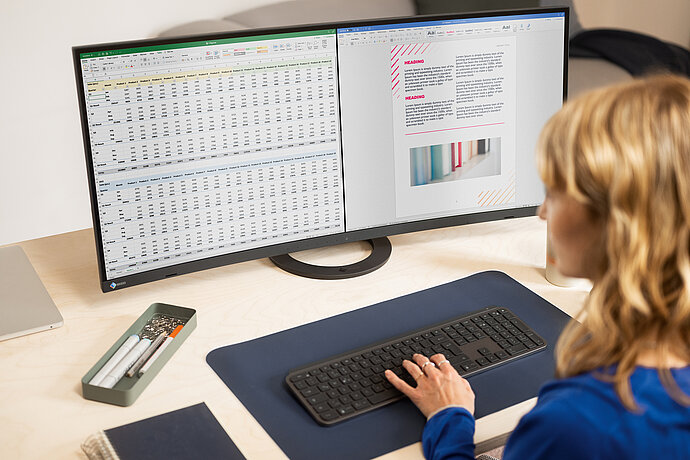
Graphic work (media design, CAD)
When it comes down to the smallest details, there are only technical limits. The higher the pixel density of the display, the easier it is to work with pixel accuracy. Interesting monitors for this area of application start at 110 dpi.
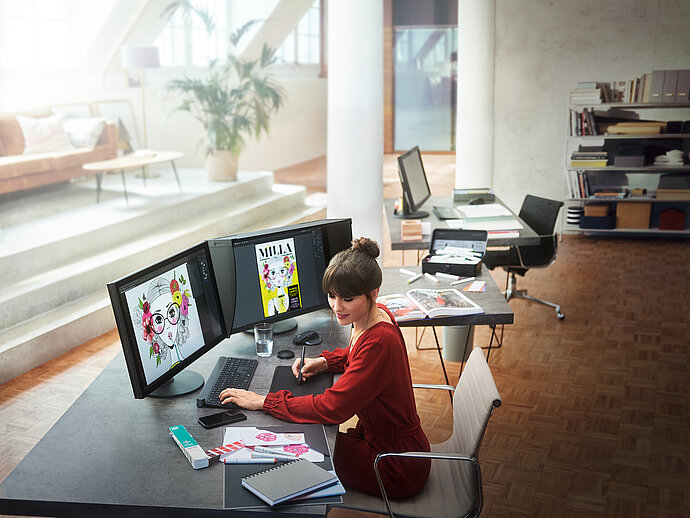
Gaming
For gaming fans, the choice of monitor depends primarily on which games they prefer to play. Games with large game worlds and a long viewing distance, for example, benefit from a high pixel density, as objects at a greater distance can still be seen sharply and clearly. 92 to 120 dpi is a suitable guide value.
However, there is another aspect to games. High resolutions also go hand in hand with increasing hardware requirements: if you want to experience modern games in high resolution and with a fast refresh rate, you need a correspondingly powerful computer. Depending on the available equipment, it is therefore necessary to consider whether a slightly lower resolution in favor of a smoother display might be the better choice.
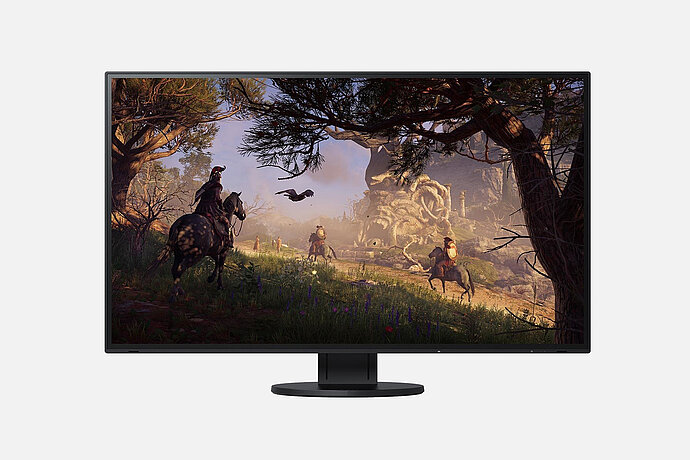
The future is high-resolution
When buying a new monitor, a device with more than Full HD resolution is recommended for almost every application these days. Corresponding displays have long since become affordable. In addition, the purchase is no longer only worthwhile for creative professionals, but also for pure consumers, as more and more content is being produced in high resolution.
A variety of factors play a role in the selection of the specific 4K monitor and the ideal pixel density. In addition to the desired area of application, these also include aspects such as the available budget and the free space on the desk.
EIZO offers a wide range of different monitors for all facets of digital life. Some particularly recommendable models are listed here:
